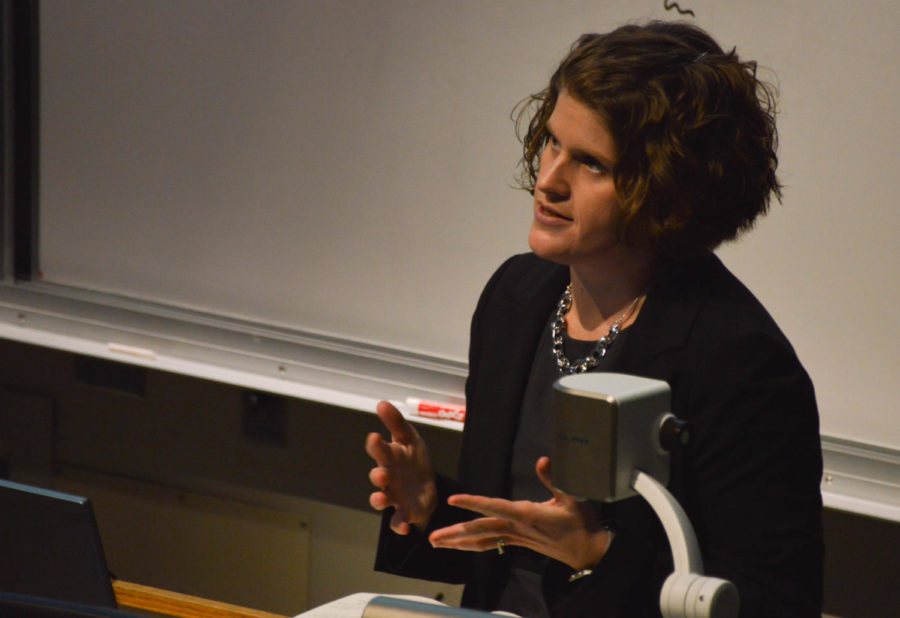Lecture educates on the importance of legacy cities
Maddie Leopardo/Iowa State Daily
Stephanie Ryberg-Webster, associate professor of urban studies at Cleveland State University, gives a lecture on the intersections of historic preservation and urban development in legacy cities on March 23 in Kocimski Auditorium. The lecture, titled “the future of the past in America’s legacy cities,” was part of the contemporary issues in planning and design lecture series.
March 23, 2017
Cleveland State University associate professor Stephanie Ryberg-Webster discussed the importance of preserving America’s legacy cities and giving them a chance to remain as some of America’s oldest cities Thursday.
She expressed these points to an audience at Kocimski Auditorium in the design building, many of whom are community and regional planning students of assistant professor Ted Grevstad-Nordbrock, who invited the speaker.
Ryberg-Webster talked about the importance of legacy cities by emphasizing the importance of their rich history and heritage. She also explained the downsides of these cities because of their struggle to remain and adapt to an ever-changing society and economy.
Ryberg-Webster discussed the characteristics that make a place a legacy city by stating that these cities have seen a declining population through the years after reaching their highest population peak.
Cleveland, Ohio, peaked during the 1950s and now is declining to this day. These cities also tend to have more poverty.
Ryberg-Webster explained the complexity of these declining cities because many first thoughts about legacy cities are about abandonment and decline, and industries that are no longer intact. She said Cleveland, however, is still alive and vibrant.
Even though legacy cities in general are still declining in population, the downtown populations are universally increasing with the help of tax credits, which help start revitalization cities like Cleveland.
Even though Cleveland’s downtown district is growing and improving, there are still distressed neighborhoods such as communities in Slavic Village, where there are more vacant lots than occupied homes. Communities like Slavic Village have high support for preservation and rehabilitation
Slavic Village used to be a booming industrial district that provided jobs for working blue collar Americans in the 1950s.
Slavic Village residents and organizations are not giving up on their neighborhoods. They are embracing the historical heritage as their brand in gaining support from other communities.
Ryberg-Webster also tackled the issue of race, which plays a role in the success of legacy cities.
“To talk about preservation and history and the future of legacy cities that are heavily populated with racial minorities and to not talk about race really neglects the huge challenge going forward,” Ryberg-Webster said.
Many minority communities were demolished to construct public housing, erasing historically black heritage.
Slavic Village in the 1950s had a very small population of minorities, but that soon changed in the 1990s. Today, a large number of African-Americans live in Cleveland.
Ending her lecture, Ryberg-Webster laid out a way to help with the preservation of legacy cities.
She stressed the importance of developing better tools to preservation and increasing flexibility and inclusion. But she also emphasized creativity, because she believes there is no better way than bringing new ideas to improve the communities in Cleveland.







